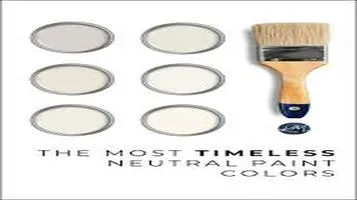Marble: A Timeless Testament to Elegance and Durability
Marble is a metamorphic rock renowned for its beauty and versatility, commonly used in sculpture and architecture. Formed from limestone subjected to intense heat and pressure over millions of years, it gains a crystalline structure and a characteristic veined appearance. The color and veining of marble vary depending on its mineral composition, with shades ranging from pristine white to rich greens, pinks, and blacks. Historically, marble has been prized by artists and builders; iconic structures like the Taj Mahal and sculptures such as Michelangelo's David are testament to its enduring appeal. Its luxurious aesthetic makes it a sought-after material for countertops, flooring, and decorative elements in modern design, offering both elegance and durability.

Marble, the metamorphic rock composed of recrystallized carbonate minerals, most commonly calcite or dolomite, has long been celebrated for its timeless beauty and enduring strength. From the ancient Greek and Roman civilizations to contemporary architecture and design, marble has remained a material of choice for those seeking to combine aesthetic appeal with lasting durability. This review delves into the multifaceted virtues of marble, examining its historical significance, aesthetic qualities, practical applications, and the considerations one should bear in mind when choosing marble for various projects.
Historical Significance
Marble’s illustrious history can be traced back to antiquity, where it was revered for its beauty and versatility. The Greeks and Romans extensively used marble in their architectural marvels, sculptures, and monuments. The Parthenon in Athens, the statues of Michelangelo, and the Taj Mahal in India stand as testaments to marble’s enduring legacy. This historical significance imbues marble with a sense of grandeur and timelessness that few other materials can match.
Aesthetic Qualities
One of the most compelling reasons to choose marble is its unparalleled aesthetic appeal. Marble is available in a variety of colors and patterns, ranging from the pristine whites of Carrara marble to the deep greens of Verde Alpi. This diversity allows for a wide range of design possibilities. The natural veining and subtle color variations within each slab make every piece of marble unique, adding a layer of individuality to any project.
The luminosity of marble, due to its slightly translucent nature, lends a soft, glowing quality that enhances the ambiance of any space. This characteristic is particularly evident in sculptures and monuments, where the play of light on marble’s surface can bring out intricate details and impart a lifelike quality.
Practical Applications
Marble’s versatility extends beyond its aesthetic qualities, finding practical applications in various domains:
1. Architecture and Construction: Marble is a favored material for flooring, wall cladding, and countertops in both residential and commercial spaces. Its durability makes it suitable for high-traffic areas, while its elegance adds a touch of luxury.
2. Sculpture and Art: Artists have long favored marble for its workability and the fine details it can achieve. The softness of the stone allows for intricate carvings, yet it is hard enough to withstand the test of time.
3. Furniture and Decor: Marble is increasingly being used in furniture design, from coffee tables to bathroom vanities, adding a sophisticated touch to interiors.
4. Outdoor Landscaping: Marble’s resistance to weathering makes it suitable for outdoor applications such as garden paths, statues, and fountains.
Considerations and Challenges
While marble offers a plethora of benefits, it is essential to consider certain factors before opting for it:
1. Maintenance: Marble is porous and can be susceptible to staining from spills, especially acidic substances like wine or citrus juices. Regular sealing can mitigate this issue, but it requires ongoing maintenance.
2. Cost: Marble is generally more expensive than other materials like granite or quartz. The cost can vary significantly depending on the type and quality of the marble.
3. Susceptibility to Damage: Despite its durability, marble can be prone to chipping and scratching, particularly in high-use areas like kitchen countertops. Using cutting boards and avoiding abrasive cleaners can help preserve its surface.
4. Environmental Impact: The extraction and transportation of marble can have a significant environmental footprint. It’s advisable to consider the sourcing of the marble and opt for suppliers who adhere to sustainable and ethical practices.
Conclusion
In conclusion, marble remains a symbol of elegance and durability, seamlessly blending historical significance with modern-day applications. Its unique aesthetic qualities and versatility make it a preferred choice for architects, designers, and artists. However, the decision to use marble should be informed by an understanding of its maintenance requirements, cost implications, and environmental impact.
For those willing to invest in its upkeep, the rewards are manifold. Marble can transform ordinary spaces into extraordinary ones, infusing them with a sense of luxury and timeless beauty. Whether used in grand architectural projects or subtle interior details, marble continues to be a testament to human artistry and the enduring allure of natural materials.






